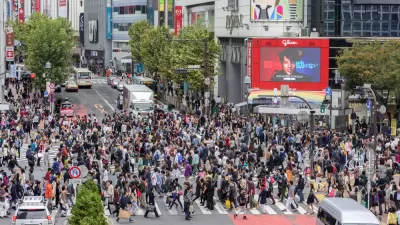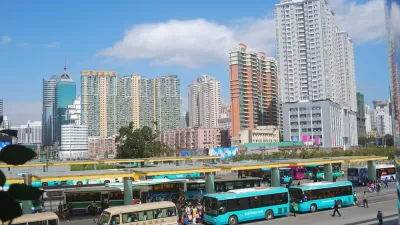After years of decline, Youngstown Ohio has an aggressive plan to bulldoze abandoned properties and pare back on services and infrastructure.
"Youngstown, Ohio, has seen its population shrink by more than half over the past 40 years, leaving behind huge swaths of empty homes, streets and neighborhoods.
Now, in a radical move, the city - which has suffered since the steel industry left town and jobs dried up - is bulldozing abandoned buildings, tearing up blighted streets and converting entire blocks into open green spaces. More than 1,000 structures have been demolished so far.
Under the initiative, dubbed Plan 2010, city officials are also monitoring thinly-populated blocks. When only one or two occupied homes remain, the city offers incentives - up to $50,000 in grants - for those home owners to move, so that the entire area can be razed. The city will save by cutting back on services like garbage pick-ups and street lighting in deserted areas.
Today, downtown is positively sleepy and even somewhat derelict. Residents have to drive out of town to shop for clothes or housewares. And while foreclosures have long been a scourge in this city, they have recently skyrocketed along with the rest of the country, up 178% in February from a year ago.
Youngstown's infrastructure-paring strategy may yet become a model for other Rust-Belt cities that must recreate themselves after years of decline. Already, delegations from smaller, post-industrial cities like Flint, Mich.; Wheeling, W.Va.; and Dayton, Ohio, have come to Youngstown to study the plan."
FULL STORY: The incredible shrinking city

Planetizen Federal Action Tracker
A weekly monitor of how Trump’s orders and actions are impacting planners and planning in America.

San Francisco's School District Spent $105M To Build Affordable Housing for Teachers — And That's Just the Beginning
SFUSD joins a growing list of school districts using their land holdings to address housing affordability challenges faced by their own employees.

The Tiny, Adorable $7,000 Car Turning Japan Onto EVs
The single seat Mibot charges from a regular plug as quickly as an iPad, and is about half the price of an average EV.

Seattle's Plan for Adopting Driverless Cars
Equity, safety, accessibility and affordability are front of mind as the city prepares for robotaxis and other autonomous vehicles.

As Trump Phases Out FEMA, Is It Time to Flee the Floodplains?
With less federal funding available for disaster relief efforts, the need to relocate at-risk communities is more urgent than ever.

With Protected Lanes, 460% More People Commute by Bike
For those needing more ammo, more data proving what we already knew is here.
Urban Design for Planners 1: Software Tools
This six-course series explores essential urban design concepts using open source software and equips planners with the tools they need to participate fully in the urban design process.
Planning for Universal Design
Learn the tools for implementing Universal Design in planning regulations.
Smith Gee Studio
City of Charlotte
City of Camden Redevelopment Agency
City of Astoria
Transportation Research & Education Center (TREC) at Portland State University
US High Speed Rail Association
City of Camden Redevelopment Agency
Municipality of Princeton (NJ)





























